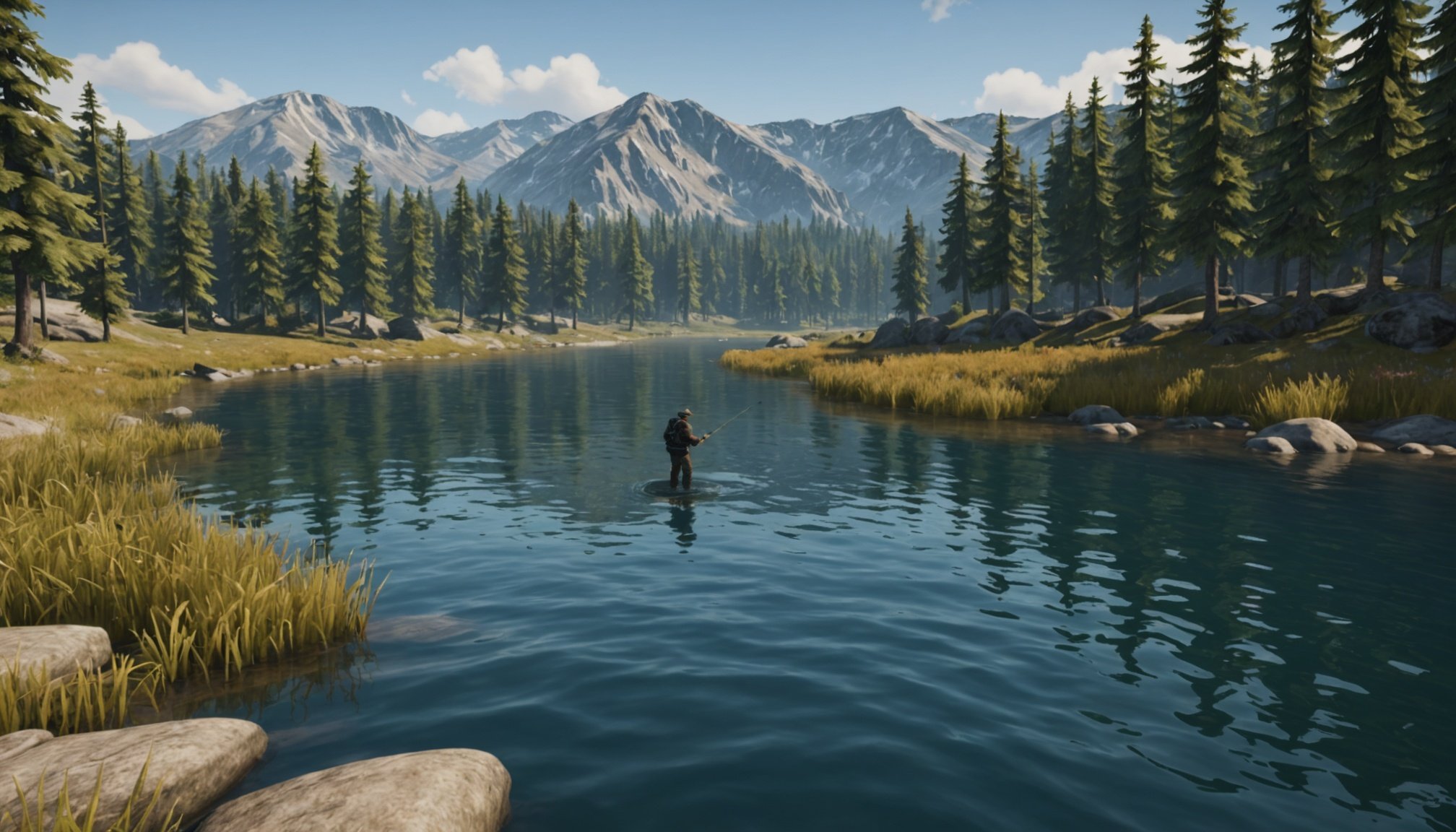Principles of Realistic Water Dynamics
Realistic water dynamics play a critical role in elevating both the authenticity and the engagement of a game. One of the core principles in water dynamics is the accurate simulation of fluid behavior, which hinges on fundamental physics principles like fluid mechanics and hydrodynamics. These theories detail how water moves and interacts with objects, influencing everything from ripples to waves.
Fluid simulation aims to replicate these phenomena to achieve realism, making gameplay more immersive. The accuracy of these simulations affects user perception significantly, making the experience more convincing and enjoyable. High-fidelity fluid simulations enhance player immersion by mimicking the unpredictability and subtle nuances of real-world water bodies.
Also to discover : Revolutionizing Education with Immersive VR: Key Components for Impactful Learning Experiences
Different physics engines offer varied levels of realism and performance. In existing fishing simulation games, these engines demonstrate varying capabilities. Some excel in recreating visually stunning water dynamics, while others compromise realism for improved performance. For instance, some games may use simplified models to manage computational resources, impacting the authenticity of the fluid simulation. Evaluation of these games reveals that a balance between precision and playability is often sought, though not always achieved. This balance directly impacts both gameplay and user experience, underscoring the importance of selecting the right engine and approach for simulating realistic water dynamics.
Analysis of Fishing Simulation Games
When analysing the fishing games available on the market, one can identify fascinating variations in how these games approach and implement realistic water dynamics. This element plays a crucial role in capturing the essence of fishing, enhancing player satisfaction by providing a more lifelike experience. Let’s delve into the simulation analysis of some popular titles in this genre.
Also to read : Revolutionizing Rhythm Games: AI-Generated Adaptive Music Scores for Unmatched Gaming Soundtracks
Case Studies of Popular Fishing Simulation Games
Several games stand out for their detailed depiction of aquatic environments. These titles often employ complex fluid simulation techniques to replicate the unpredictable nature of water bodies. This encompasses everything from the gentle lull of a calm lake to the chaotic churn of ocean waves, deeply enriching the gameplay experience.
Strengths and Weaknesses in Water Dynamics
While some games excel in the visual portrayal of water, achieving a delicate balance between realism and performance can be challenging. Often, developers face constraints that hinder the representation of authentic water dynamics. Common weaknesses include stilted water interactions or simplified water physics, partly due to the need to maintain smooth gameplay.
Player Feedback on Realism in Gameplay
Player communities actively discuss and evaluate these aspects, offering insights into the strengths and areas for improvement. Feedback often highlights the significance of well-executed water dynamics, with players seeking immersive environments that react convincingly to their actions within the game. Such insights can guide future game development efforts to enhance realism.
Challenges in Implementing Realistic Water Dynamics
Incorporating realistic water dynamics into video games presents a myriad of game development challenges. Developers often grapple with technical limitations that can hinder the faithful depiction of fluid movement. The intricate nature of fluid simulation demands significant computational power, necessitating a delicate balance between realism and performance.
Hardware limitations often restrict the level of detail achievable in simulations. This affects not just visual fidelity but also how water interacts with in-game elements. Achieving realism becomes challenging when the hardware cannot support complex algorithms required for advanced simulations. Developers must choose between high-resolution effects, which enhance realism but may hamper game performance, or simplified models that improve speed but reduce authenticity.
Moreover, balancing visual aesthetics with gameplay performance is a persistent issue. An overly detailed fluid model can detract from the overall gaming experience by causing lag or frame rate drops. Developers aim to optimise water effects, ensuring smooth gameplay even on less powerful devices.
To tackle these challenges, it’s crucial for developers to explore innovative solutions and optimisation techniques, ensuring a seamless yet visually appealing experience for players in games characterised by dynamic water environments.
Solutions for Enhanced Water Effects
In the realm of game development, achieving realistic effects through fluid simulation is a significant pursuit. Developers eager to enhance water effects can turn to several advanced techniques. Understanding and employing these methods are paramount for replicating natural water behaviour effectively.
Advanced Techniques in Fluid Simulation
Particle-based simulations, such as Smooth Particle Hydrodynamics (SPH), allow for detailed and realistic water portrayals by tracking individual particles and their interactions. This method captures intricate details of water dynamics, closely mimicking real-world behaviour. Another innovative approach is the use of Level Set methods, which accurately simulate fluid interfaces, improving realism.
Tools and Resources for Developers
Availability of sophisticated tools facilitates the simulation of realistic effects. Middleware options like NVIDIA’s PhysX and the open-source Bullet Physics Library provide robust frameworks for simulating realistic water dynamics within games. These tools enable developers to incorporate complex fluid interactions and behaviour effectively.
Optimization Strategies to Improve Performance
Optimising water effects without sacrificing gameplay quality is crucial. Techniques such as Lod (Level of Detail) scaling and efficient shader programming help maintain fluid simulation performance. Developers can implement selective detail rendering, focusing computational resources on crucial elements while easing demands elsewhere.
By integrating these innovative techniques and tools, developers can create credible, engaging water environments that enhance the user experience.
Coding and Design Tips for Developers
Creating realistic water effects in games requires a combination of coding expertise and thoughtful design. Developers should prioritise key coding techniques that accurately represent water dynamics. One essential approach is leveraging particle systems to simulate the fluidity of water. These systems mimic real-world interactions, creating lifelike ripple effects. Additionally, vector fields can guide water movement, adding authenticity to the simulation.
Design elements play a crucial role in the game development process. Consider incorporating detailed texturing and lighting techniques to enhance visual realism. Textures should reflect the dynamic nature of water surfaces, while advanced lighting models capture reflections and refractions effectively. Moreover, developers should balance detail and performance to maintain smooth gameplay.
Incorporating user feedback is vital. Developers can refine their designs by analysing player responses, thus ensuring that water environments align with user expectations. Engaging with the gaming community early in the development process can provide insights that shape more realistic and immersive experiences.
By mastering these coding techniques and design strategies, developers can craft compelling water environments that captivate players and elevate the overall gaming experience. This approach ensures not only realism but also playability, satisfying both technical and aesthetic demands.










